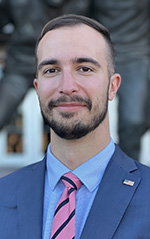The Dayton Peace Accords at 30: Firsthand Accounts from U.S. Diplomats Who Were There
COMPILED BY FRAN LESKOVAR
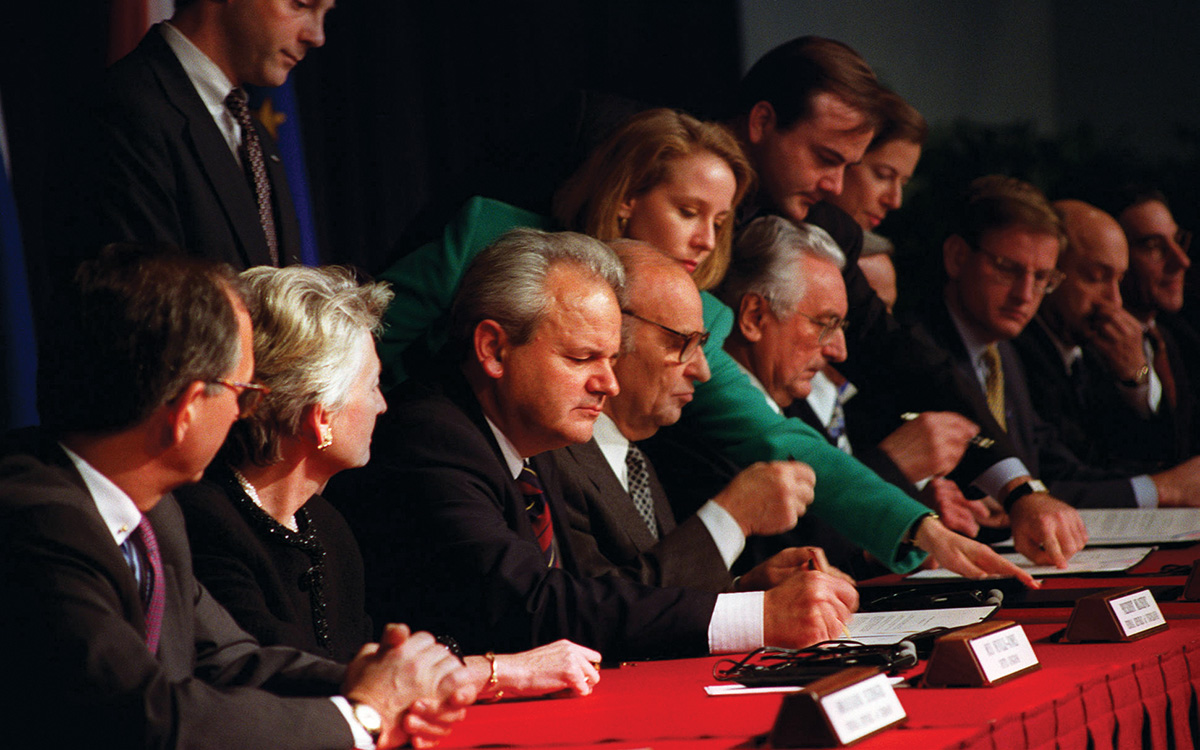
Slobodan Milosevic (third from left), Alija Izetbegovic (fourth from left), and Franjo Tudjman (sixth from left) initialing the Dayton Accords at Wright-Patterson Air Force Base, outside Dayton, Ohio, on November 21, 1995. The Dayton Accords ended the conflict arising from the breakup of the Republic of Yugoslavia and paved the way for signing the final “General Framework Agreement for Peace in Bosnia and Herzegovina” on December 14, 1995.
PJF Military Collection / Alamy
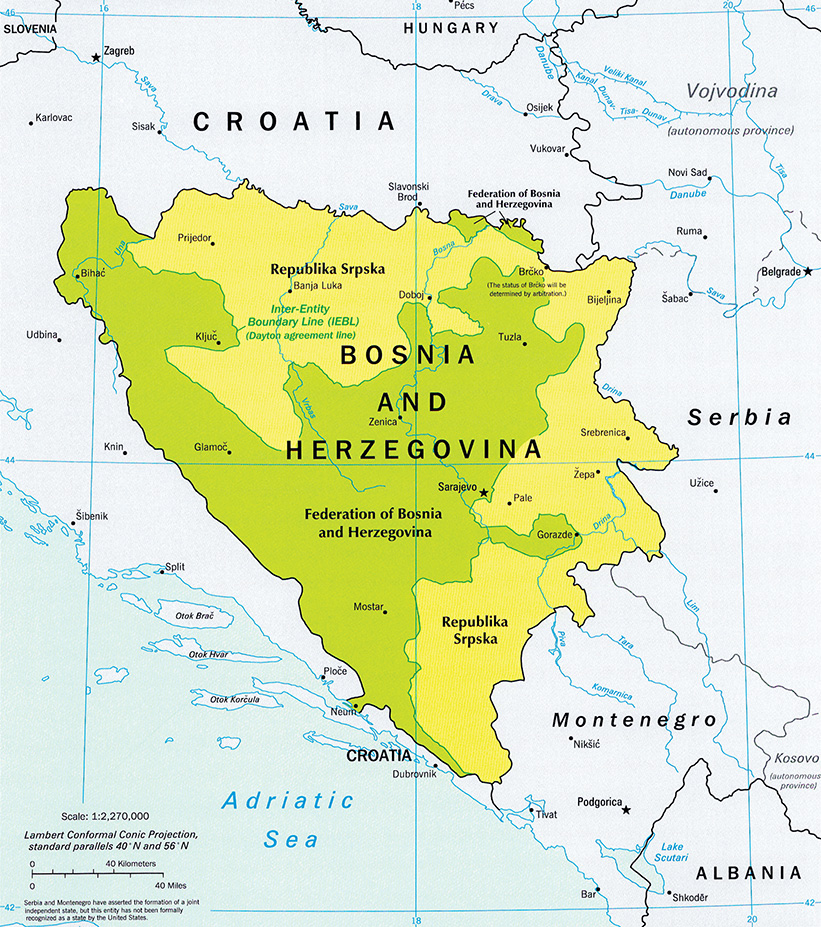
This map shows Bosnia and Herzegovina as per the Dayton Accords, with the Inter-Entity Boundary Line demarcating the Federation of Bosnia and Herzegovina on the one hand and Republika Srpska on the other.
Central Intelligence Agency
For four years in the early 1990s, a horrific war raged in the Balkans following the dissolution of Yugoslavia. After witnessing ethnic cleansing, crimes against humanity, and a refugee crisis not seen in Europe since World War II, as well as coming to terms with the fact that a more powerful intervention was needed, the United States embarked on a mission to end the conflict in 1995. Between August and October 1995, Assistant Secretary of State for European and Canadian Affairs Ambassador Richard C. Holbrooke and his team shuttled between Belgrade, Sarajevo, and Zagreb, negotiating ceasefire conditions and outlining the terms of an eventual peace agreement.
On November 1, 1995, representatives from Serbia, Bosnia and Herzegovina, and Croatia met at the Wright-Patterson Air Force Base in Dayton, Ohio, for proximity peace talks. Twenty-one days later, the General Framework Agreement for Bosnia and Herzegovina, commonly known as the Dayton Peace Accords, was reached, beginning the complex peace implementation process that continues to this day.
In recognition of the 30th anniversary of the Dayton Peace Accords, the Association for Diplomatic Studies and Training (ADST) collected oral history accounts from U.S. officials involved in the 1990s efforts to bring stability to the Western Balkans and subsequent implementation of the accords. ADST combined these with an extensive collection of oral history on the Balkans already in its archive and with accounts from the U.S. Department of State’s Dayton Accords History Project to create an interactive digital anthology.
The anthology offers a historical narrative and lessons learned that are helpful in training the next generation of America’s national security leaders; it also illustrates the dedication and contributions of U.S. Foreign Service officers to making the United States “safer, stronger, and more prosperous.”
The following excerpts, drawn from the anthology, reflect the evolution of U.S. engagement in the Balkans as seen through the eyes of U.S. diplomats—from the optimism that followed the fall of the Iron Curtain, through the challenges of ending the Yugoslav conflict, to the Dayton Peace Accords and their enduring legacy. For more firsthand accounts on the subject, visit the digital interactive anthology at https://adst.org/dayton-accords/.
—Fran Leskovar
Optimism Regarding Peacekeeping in the Post–Cold War World
BY KARL L. INDERFURTH
This was a time [the early 1990s] when there were great hopes for the United Nations (UN) and for peacekeeping. The Cold War was over. Peacekeepers had just a few years earlier been awarded the Nobel Peace Prize. … But there were also two looming problems. The immediate issue was what was happening in Bosnia and the former Yugoslavia and, specifically, what to do about [Slobodan] Milosevic and the attempt by the Serbs to “ethnically cleanse” Bosnia.
Everyone was reading these horror stories in the press about the Balkans. The Balkans were at war. What would happen to Kosovo and Macedonia and Croatia? This was part of the breakup, the fallout if you will, of the end of the Cold War and the end of the Soviet Union. Yugoslavia was disintegrating.
Mood on the Yugoslav Desk
BY BILHA BRAYANT
It had become a very difficult place to work [in 1994]. All of us on the Yugoslav desk were very, very unhappy that after all our hard work, we couldn’t stop the bloodshed. We were faced daily with reports describing in detail the massacres of innocent people that occurred in many places. I remember reading about 16 or 17 Bosnians who got on a train for Sarajevo and never arrived there. Later their bodies were found in a mass grave.
We had to read the reports about the terrible rapes and just horrible situations—a young Muslim woman in Sarajevo who was raped by Serbs not being able to tell her parents about it [so as] not to bring shame on the family. And with all of that going on, we sat there and wrote platitudes. We are the most powerful nation in the world. If we had said to Milosevic, “Stop it. If not, we will drop a bomb in the middle of Belgrade”—just say it, “Don’t do it.” But we kept saying we would not get involved.
Milosevic is a bully, and we all knew he was a bully. You have to use different tactics with a bully, and yet we treated him like a normal man.
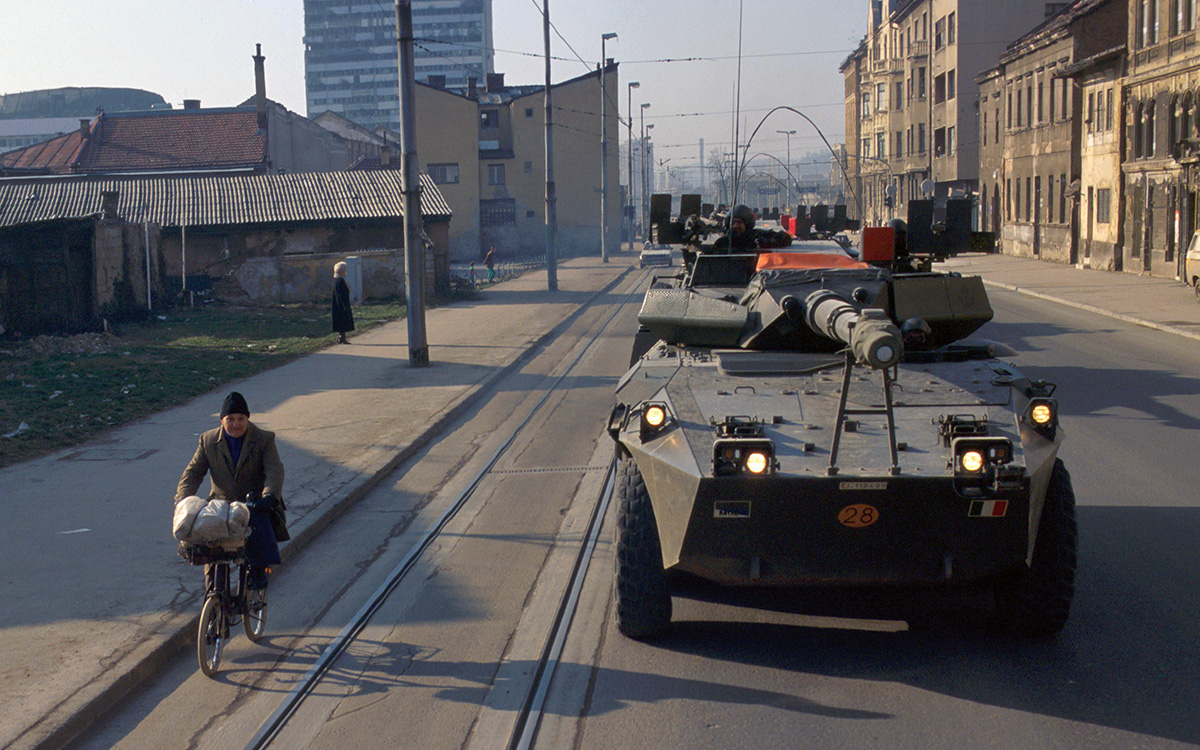
A Centauro armored car of the Italian army enters Sarajevo on January 11, 1996, during the NATO intervention following the Dayton Accords.
Dino Fracchia
The Mount Igman Tragedy: Ending the War Becomes a Priority
BY CRAIG DUNKERLEY
Thinking back to that moment: For many of us who had been working on European issues, Srebrenica seemed to demonstrate in the most painful way the hollowness of the international community’s efforts up to that point simply to stop the killing in Bosnia.
Within the U.S. government, there was also a realization in this general period that NATO—and that would mean the U.S. in a big way—would be in fact very much on the hook if things really got threatening with the UN peacekeeping effort in the former Yugoslavia. There had been an earlier commitment to use U.S. troops as part of a larger NATO operation if the UN peacekeepers needed to be extracted under difficult conditions—something that seemed not unlikely given the course of events in early 1995. All this gave force to an evolving realization in Washington of just how seriously U.S. interests might be damaged if things continued in the current direction. It underscored for some the need for a new course.
This was the context of the Bosnian issue when I first returned to the Bureau of European and Eurasian Affairs (EUR) ranks. Events struck as a rush. Just as I was arriving, the administration was beginning a new round of diplomatic efforts. Holbrooke was undertaking the first leg of what would eventually become his constant “shuttle diplomacy” with the parties of the region. This trip was, of course, cut short by the tragic accident on Mount Igman in mid-August when key members of his team—Bob Frasure of EUR, together with Nelson Drew of the National Security Council staff and Joe Kruzel of the Pentagon—were killed when their armored personnel carrier went off a dangerous mountainside road.
I remember very clearly going out to Andrews [Air Force Base] with so many colleagues from the State Department to meet the return of their bodies and then attending the set of memorial services for the three at Arlington [National] Cemetery. As Holbrooke has described in his own writings, that tragedy, in turn, set in motion a number of high-level decisions that began to mark a major shift in U.S. course. That was certainly the sense for those of us working at the EUR Bureau level at the time, [during] those August/September days; in contrast with the preceding two years or so, we now had passed a major policy turning point.
The Road to Dayton
BY PETER GALBRAITH
There were basically eight weeks of shuttle diplomacy. Holbrooke flying from Sarajevo, Belgrade, Zagreb. Dayton then began on the first of November and went for 21 days. A great deal of what was accomplished in Dayton had actually been accomplished before then.
The first of these was a meeting in early September in Geneva with the foreign ministers—Milutinovic of Yugoslavia, Sacirbey of Bosnia, and Granic of Croatia—at the U.S. Mission to the United Nations, in which they agreed to some fairly far-reaching basic principles, one of which was that everybody agreed that Bosnia-Herzegovina would continue as a single state.
Second, it would have two entities: one being the Republika Srpska, which was the first time that that name was recognized, and the other being the Federation of Bosnia-Herzegovina; and that there be common institutions and so on. Then those were elaborated in a meeting in New York on the 25th of September with further agreed principles. There was a process that was laying down a lot of the stuff that was being elaborated at Dayton.
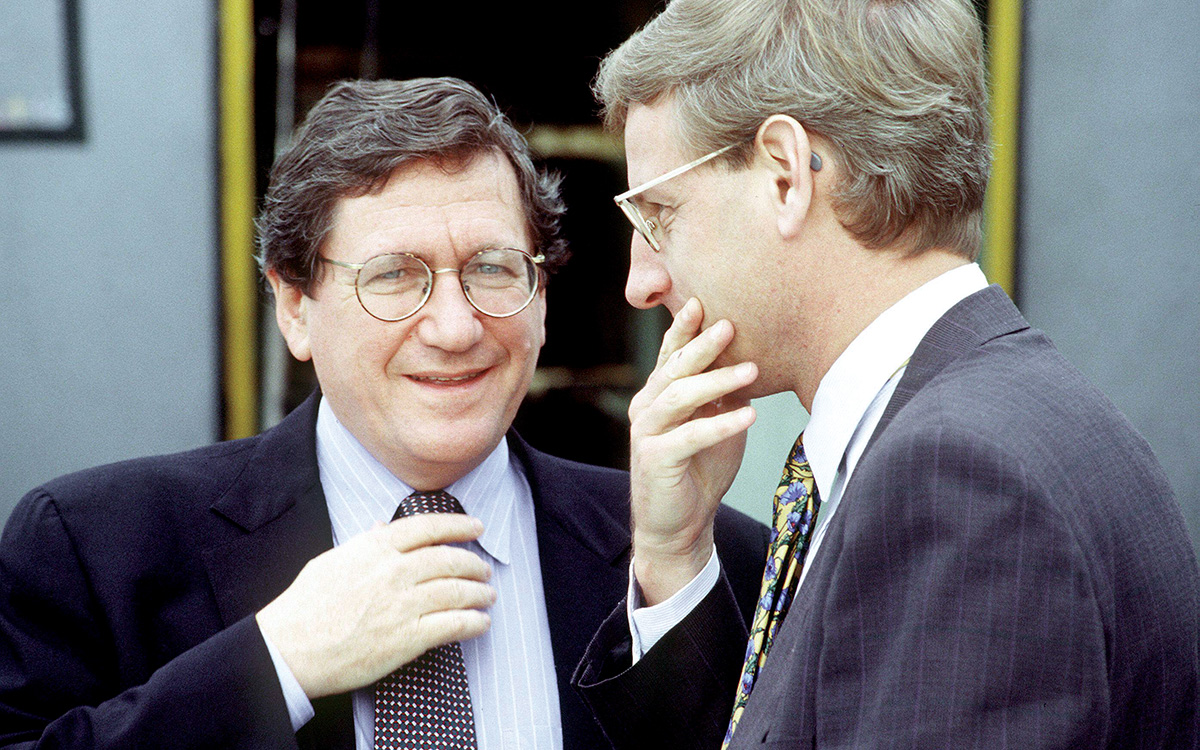
U.S. Assistant Secretary of State Richard Holbrooke (left) and former Prime Minister of Sweden Carl Bildt, who served as the European Union’s Special Envoy to the Former Yugoslavia from June 1995 and co-chair of the November 1995 Dayton Peace Conference, in discussion as they await a C-130 Hercules aircraft that will fly them into Sarajevo for peace talks on October 2, 1995.
NB / ROD
Dayton Accords, U.S. Product, and Milosevic’s Urge to End the War
BY RUDOLPH V. PERINA
The Europeans were allowed to be there symbolically because we all knew that in the end we would need the Europeans. NATO would have a post-Dayton role, and a vast amount of reconstruction assistance would be required, and so on. But by and large, Dayton was a U.S. show, and really Holbrooke’s show. I think Holbrooke deserves a lot of credit for what was accomplished in Dayton. Certainly, the agreement did not bring love and everlasting peace to the Balkans, but it did stop the fighting and the bloodshed, and that in and of itself is a very significant accomplishment.
Now I also think—and I believe Holbrooke would agree with this—that Milosevic did a lot to make Dayton possible. This does not absolve him of his complicity in starting the whole conflict, but it is a reality that should be understood. Milosevic operated much like Holbrooke in keeping a lot of information to himself and not sharing it. He cut the final deal in Dayton with Holbrooke, making an agreement possible. …
[The Dayton Peace Accords] were actually signed twice. There was a signing ceremony at the end of the Dayton Conference in November, and then there was a formal signing ceremony in Paris in December, which the French very much wanted. Holbrooke agreed to this because we needed the Europeans to help implement the agreement, and also because the Paris ceremony was pretty much déjà vu. The really significant event was when the three presidents signed the agreement in Dayton.
Many Serbs in the delegation, as I mentioned, were devastated. They saw the agreement as a total sellout. But for Milosevic, it was a real moment of triumph. Here he had moved from being a sanctioned pariah to being a peacemaker on television screens around the world. Congratulations to the three presidents came from everywhere, including from President Clinton at the White House.
I really think Milosevic believed at that moment that he had managed to change his image and shed his pariah status. But we had not forgotten about Kosovo, and Kosovo was yet to be his undoing.
Compromise and Creative Diplomacy at Dayton
BY ROBERT WILLIAM “BILL” FARRAND
The whole peace agreement that was hammered out in Dayton in three weeks almost fell apart because of Brcko. It almost fell apart. Neither side would budge at all. It was going to become, people were concerned, it would become a casus belli again, a trigger for more fighting from the partisan groups, things of this nature.
So, they agreed at Dayton … I think it was [Secretary of State Warren] Christopher who came forward and said, “Look, we can’t resolve this issue. We’re going to have to figure out what to do. ... What if we put this under arbitration, binding arbitration for one year? What about that?” In other words, we close this discussion down, this three-week discussion, and we leave this one issue out here hanging, breathing, but we put it under binding arbitration.
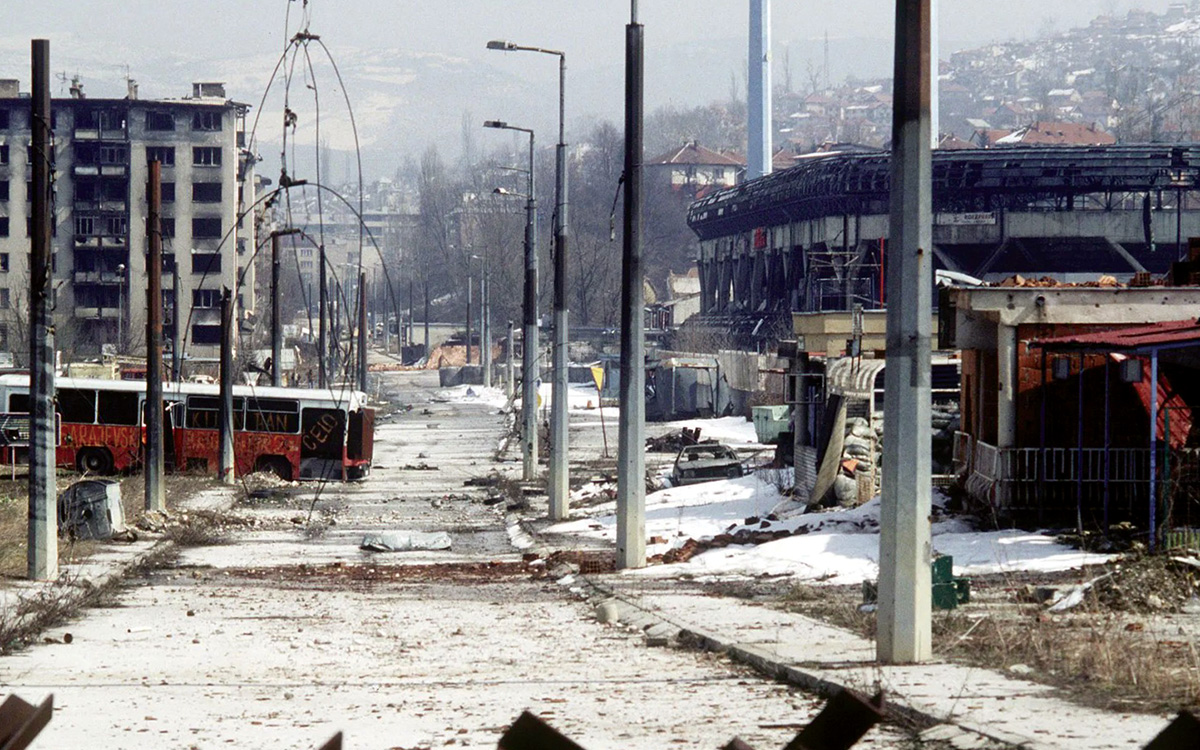
Buildings and vehicles destroyed in Grbavica, a suburb of Sarajevo, Bosnia and Herzegovina, during the Bosnian conflict.
Lt. Stacey Wyzkowski / U.S. Department of Defense
Dayton’s Unintended Consequences
BY ALLAN REED
The Dayton Peace Accords ended a horrible conflict, but it set in place a system that is so unwieldy. There are 14 levels of government. At each level, you have a tripartite system, where you have a Bosnian Serb, a Bosnian Muslim, and Bosnian Croat, and they all have equal veto power. Nothing ever gets done, except at the municipal level where there is direct election of mayors.
There are still problems to this day. The country is divided into two. There’s the Republika Srpska, which is where the Bosnian Serbs are under Milorad Dodik. There’s the Federation of Bosnia and Herzegovina, which is a federation of Croats and Bosniaks (who are Muslims). There is an enclave up toward the Serbian border, and there are cantons in the Federation of Bosnia and Herzegovina, and each canton has a parliament. It’s just totally unwieldy.
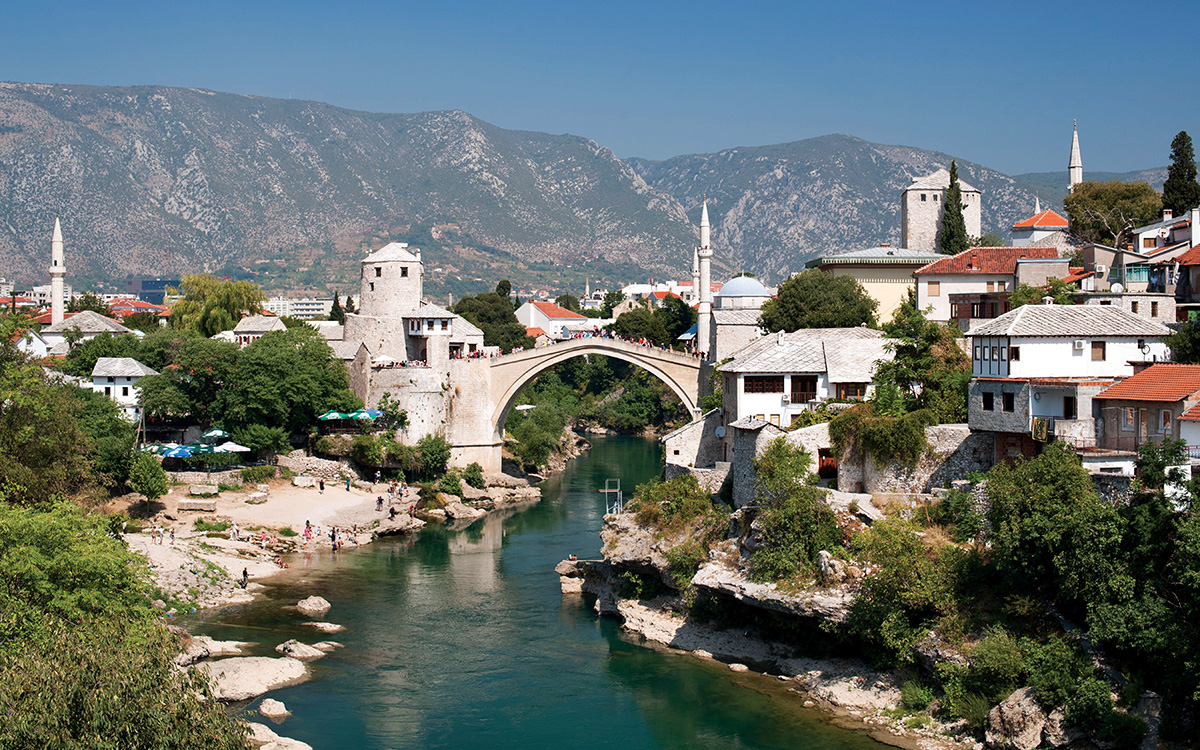
The historic town of Mostar—with its Old Bridge, the “Stari Most,” across the Neretva River—is a symbol of reconciliation. Built in the 15th and 16th centuries as an Ottoman outpost, the town was largely destroyed during the 1990s conflict. The bridge was rebuilt and many edifices restored or reconstructed with the support of UNESCO, a project completed in 2004. This photo was taken in 2012.
Eric Nathan
The Dayton Accords: Their Meaning Today
BY LARRY C. NAPPER
Dayton is one of the crowning achievements of American diplomacy in the 20th century, not because it solved all the problems of the Balkans, but because it halted a war in the heart of Europe that had devastated the region and caused many thousands of innocent deaths.
The Dayton Agreement reminds us that diplomacy is not without risks and costs, including the lives of three close associates of Ambassador Richard Holbrooke: Robert Frasure, Joseph Kruzel, and Sam Nelson Drew, whose sacrifice helped lead directly to the accords.
With Putin on the march in Ukraine, China rising in East Asia, and full-scale war threatening in the Middle East, creative, persistent, and imaginative American diplomacy has never been more important.
When sharing or linking to FSJ articles online, which we welcome and encourage, please be sure to cite the magazine (The Foreign Service Journal) and the month and year of publication. Please check the permissions page for further details.
Read More...
- “Diplomatic Differences in Bosnia” by Marshall Freman Harris, The Foreign Service Journal, April 1997
- “Implementing Dayton: A Look Back” by Robert M. Beecroft, The Foreign Service Journal, December 2020
- Commemorating the 30th Anniversary of the Dayton Peace Accords: 1995–2025, Association for Diplomatic Studies and Training

